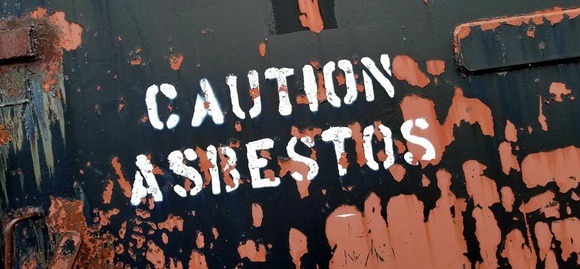Asbestos is a silicate material composed of delicate, tiny threads. It has six types, all made of long, thin fibrous crystals. Each fiber is made of numerous microscopic “fibrils” that can be released into the environment by abrasion and other processes. Asbestos is resistant to heat and chemicals, as well as fireproof, strong, and also flexible. As a result, Asbestos became a common ingredient in producing a wide range of materials, including building construction materials, textiles, and automotive parts. Asbestos used to be a very commonly used substance in the manufacturing of many products in the 20th century until countless researchers verified that it imposes serious adverse effects on human health. Frequent and repeated exposure can result in the cancer of the protective lining of the lungs or the abdomen, called Mesothelioma, along with other diseases such as pleuritis, pleural effusion, and pleural plaques, to name a few. Despite being such a dangerous threat to human health, Asbestos is still used in many industries where countless workers can be exposed to it daily.
Some of the tips and preventive measures one can take to avoid asbestos exposure are described below
1. Be Vigilant
As a construction worker, there can be procedures where you will have to deal with toxic fibers of the asbestos material and can accidentally be exposed to them. If you think you or a coworker has been exposed, don’t panic and get help as soon as possible. Understanding your risk factors and getting help to minimize them can be very effective. It would be best always to remain alert, working either directly with Asbestos or asbestos-containing material. Always handle with extreme caution and try not to disturb any material that can release asbestos fibers into the air as much as you can. Try to avoid disrupting any material you are unsure of until it has been investigated.
2. Use Personal Protective Equipment (PPE)
As a Standard Operating Protocol (SOP), one should always wear and be equipped with personal protective equipment while working with any hazardous material. If you work in an industry where it is a requirement of your job to deal with asbestos-containing materials daily, you should be provided with proper PPEs while handling and working with high-risk materials. Asbestos masks (FFP3 Grade), Cat3 Type 5/ 6 Coveralls, over-boots, goggles, gloves must be used, UN-approved asbestos bags, and clear red tape for asbestos trash. Remember that it is your right to be safe and secure from any material that can threaten your health. If your manager fails to provide this equipment, you should report such negligence.
3. Asbestos Training
Before getting hands-on training dealing with asbestos-containing materials in any industry, you should get yourself trained in dealing with asbestos-containing material appropriately while minimizing any risk of contamination. According to EPA laws regulating schools, all school staff custodial and maintenance personnel who undertake any tasks that may result in the disruption of asbestos-containing building material (ACBM) must obtain 16 hours of O&M training (comprised of 2 hours of Awareness Training and 14 hours of Special O&M Training). Asbestos Awareness Training, Non-Licensed Asbestos Training, and Licensed Asbestos Worker Training are the three forms of asbestos training offered. Training is essential to the safety of the workers and their families and should not be compromised.
4. Decontamination
Sites involving asbestos material should be thoroughly decontaminated to limit exposure to the external environment. Setting up suitable washing and changing facilities for workers to wash and change into casual attire following asbestos removal operations is also vital for decontamination purposes. At workplaces, three areas must be established: a “clean area,” a “shower area,” and a “dirty area.” Workers should only be permitted to access and depart the working site through the specified washing and changing facilities during asbestos removal activities. PPE should be worn before approaching the asbestos-containing work site. Furthermore, adequate local exhaust systems should be implemented anytime mechanical cutting, sawing, or machining soft asbestos insulating boards or hard asbestos-cement construction boards.
5. Environmental Policies
Appropriate policies should be set up to cut back on asbestos emissions into the environment through specific industries and construction worksites that ban the import of most asbestos-containing materials whose fibers can be liberated easily into the atmosphere even though many developed countries such as the US, Canada, Singapore, and others have strong environmental policies regarding the proper disposal and decontamination after any labor performed that involves Asbestos. Unfortunately, developing and underdeveloped countries are yet to implement such strict policies, but there have been signs of some promising changes in favor of public health.
6. Proper Disposal
An area should be designated as an asbestos waste area within the worksite to combine and store all ACM (asbestos-containing material) containers. Before disposal, all asbestos waste and other items used in the disposable work area must be gathered into impermeable containers. Precautions must be taken to avoid damaging the containers or spilling asbestos waste. Additionally, employees must wear appropriate respirators when collecting or replacing these filter bags. Workplaces should not be permitted to amass asbestos waste. It is highly advised to dampen asbestos trash before disposal to avoid dustiness. HEPA filters should be used instead of dry sweeping to clear asbestos dust from any surface to reduce dust collection,
Conclusion
Asbestos exposure has been very damaging and poses serious health risks to human health. Reducing its exposure to the surrounding environment is immensely important and should always be prioritized. Appropriate measures for workers dealing with Asbestos and strict environmental policies should be prioritized.

